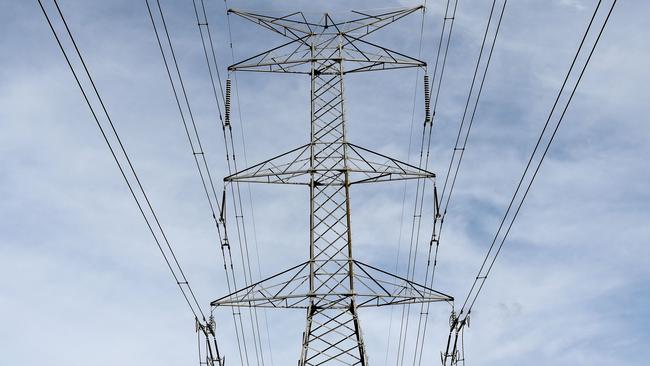
Unlike Tony Wood of the Grattan Institute, I am not prepared to raise the white flag when it comes to electricity prices. There is no reason why we can’t have cheap electricity as we once did. After all, we have wads of the underlying resources that are needed to generate electricity — coal, gas and uranium. We can even throw in a bit of wind, sun and dams into the mix.
We should aim to have electricity prices no higher than the US and Canada — their prices are around a third of ours. Bear in mind that retail electricity prices have increased here by 56 per cent, in real terms, in the decade beginning 2007-08. You can understand why some people are calling for a royal commission.
Unless we get the underlying policy parameters right — and don’t believe the current version of the national energy guarantee is the solution — there is a very good chance that eastern Australia will just end up a larger version of South Australia, with mainly high-priced, intermittent electricity generated when the wind blows and the sun shines.
The trouble for Australia, however, is that there are no interconnectors to make up for shortfalls after the short-lived batteries have been exhausted and the water has been pumped up hill and released. Gas peakers can help but are expensive.
It is clear from the South Australian experience that the national electricity market is failing. The number of days on which interventions were declared last year was 25, up from four in 2016. This year, the figure will be higher again. The number of occasions on which the wholesale price in SA has been close to or reached the peak of a tad over $14,000 per megawatt hour is also rising.
Sadly, the report of the Australian Competition & Consumer Commission on retail electricity pricing tiptoes around some of the major issues. The language is typical bureaucratic-opaque. Some of the recommendations are sound; others not so much.
But on one point, the report is clear: “Policies associated with … reducing carbon emissions have been problematic. Australia has committed … to reduce its carbon emissions. The electricity sector has been a key focus for these efforts. However, various policy failures have hurt consumers.”
We can divide the factors that drive retail electricity prices into transmission and distribution (poles and wires); generation; and retail. All three have contributed to soaring prices. Government intervention has contributed to the problems.
Mandating new reliability standards for the networks — courtesy of the Gillard government — while guaranteeing a high rate of return was always a highway to overinvestment. This occurred particularly in NSW and Queensland. The ongoing need to provide grid connections to far-flung renewable energy projects means the network costs have remained very high.
Wholesale electricity prices have soared in the past five years, with the closure of a number of coal-fired electricity plants, most particularly Hazelwood in Victoria. We can expect the same ratchet effect on prices when Liddell in NSW closes.
Make no mistake: these plants, whose lives could have been extended, have been driven out of business by highly subsidised renewable energy which has dispatch preference within the system.
This process will continue for years to come. Renewable energy, even with expensive firming capacity in the form of batteries, diesel generation, pumped hydro and gas peaking, may become a bigger proportion of the mix but will ensure that prices stay high.
The one interesting recommendation of the ACCC’s report is that the government should operate a program to contract for low fixed-price generation capacity — around $45 to $50 per MWh — for the later years of new projects. These projects would in effect be sponsored by large industrial and commercial users but would be underwritten by the government.
This intervention would be significant because it would create new sources of dispatchable supply that could easily reverse the switch to unreliable renewable energy, evening out the playing field for competing suppliers.
The government should enthusiastically grab the opportunity to support new low-cost, dispatchable generation projects which could lead to lower prices as well as prevent the further deindustrialisation of the country.






